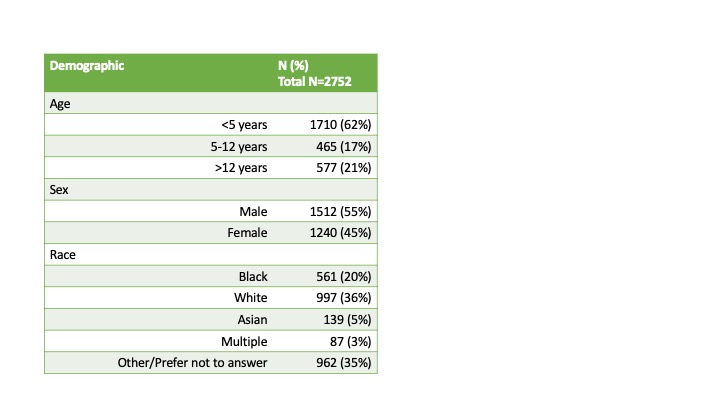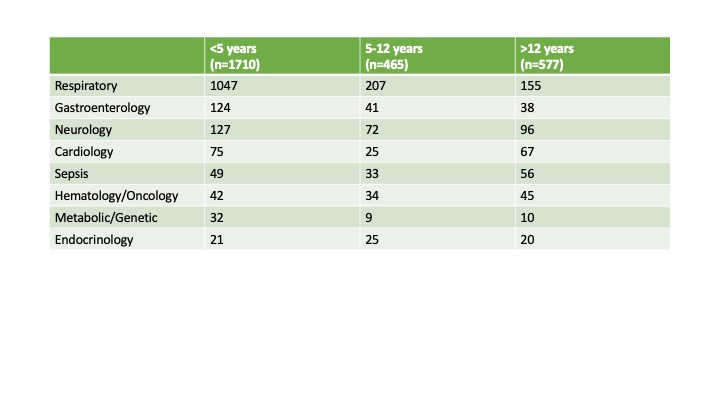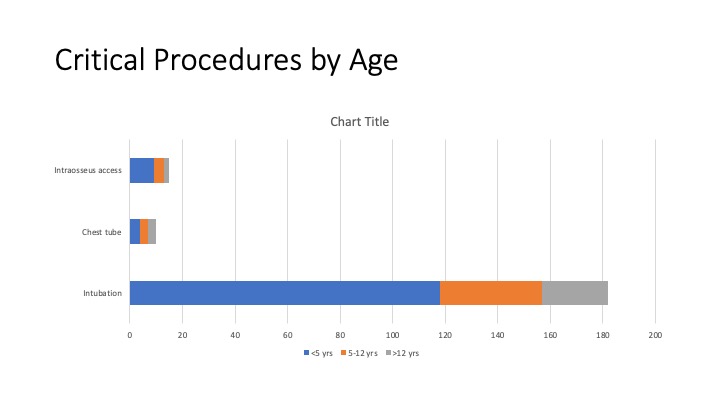Emergency Medicine: All Areas
Emergency Medicine 15
401 - Priorities for maintaining clinical competency in pediatric resuscitations
Publication Number: 401.406

Selina Varma-Thomas, MD, MPH (she/her/hers)
Assistant Professor
Northwestern University The Feinberg School of Medicine
Wheaton, Illinois, United States
Presenting Author(s)
Background: There is a paucity of data regarding the frequency of critical care resuscitations and procedures performed in the pediatric emergency department (PED). Determining resuscitations and procedures that are high stakes, low frequency events should be used to inform educational efforts to maintain clinical competency.
Objective:
To describe the frequency of and characterize the patient population requiring critical care resuscitations and procedures at a single, urban, quaternary, teaching PED over a three-year period.
Design/Methods:
We performed a retrospective cohort study of patients evaluated in the PED from 07/01/2018-06/31/2021. The inclusion criteria were as follows: disposition to an intensive care unit or expired in the PED, diagnosis of cardiac arrest or shock, required a critical procedure (intubation, chest tube placement, intraosseus or central line placement) or received an antiarrhythmic, vasoactive, sedative or paralytic medication. Trauma patients were excluded. We collected demographics, medical management and outcome data and performed descriptive statistics.
Results: Overall 2,752 patients met inclusion criteria. The majority (%) of patients were < 5 years old; 55% were male, 36% were white, 20% were black, 35% identified as Hispanic/Latinx. The most common diagnosis was respiratory failure (51%). Neurologic (10%) and gastrointestinal diseases (7%) were also common. Only 41 patients carried the diagnosis of cardiac arrest. Procedures were infrequent, 182 required intubation and 10 required chest tubes in the PED.
Conclusion(s):
We identified critical care resuscitations and procedures that are low frequency, high-stakes events in the PED. Targeted interventions are required for faculty and staff to maintain clinical competency in the management of critically ill children and with associated procedures including intubation, defibrillation and cardioversion and chest tube placement.


